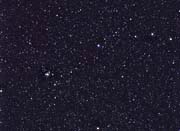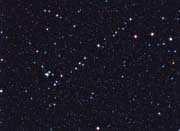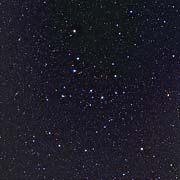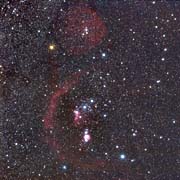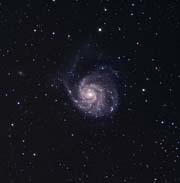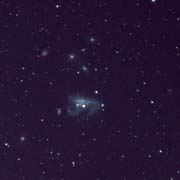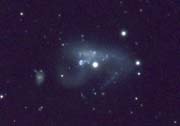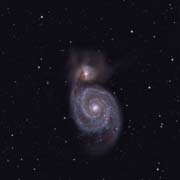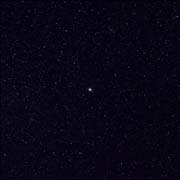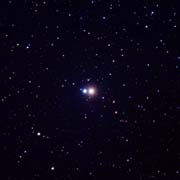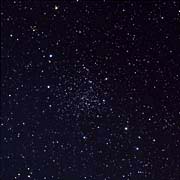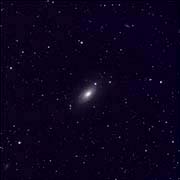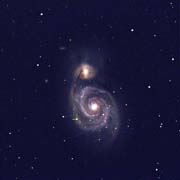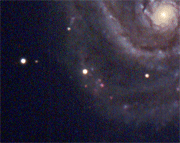After days of snow/cloud/bright Moon I actually had some hours of clear dark sky on 5th January 2011.
BUT.... The seeing was appalling. Using the 12" at f10 the fwhm was around 8.5 and the guide star was jumping all over the place. I need at most fwhm of 4 to be any good, so that was a non-starter.
So. Go for wide field. And a couple of nights earlier expecting clear skies (but the forecast was wrong!) I'd fitted a 200 mm camera lens to my one-shot colour SBIG ST4000 XCM with Kemble's Cascade in mind. For anyone who isn't familiar with it, it's a grand binocular object in Camelopardalis (earlier imaged in 2004) a cascade of stars splashing down into NGC 1502. Although it was by now well past the meridian, it was still quite high, and a couple of hours produced this (cropped vertically for better framing). 10 x 10 minutes at around f6 (f4 lens). Full size.
Although the asterism is plainly visible in binoculars, it is not so obvious in the photograph. But a light touch of artificial diffraction spikes, courtesy of Star Spikes Pro and it stands out nicely. Full size
This image appeared in the March 2011 Astronomy Now magazine and in the March-April 2013 Popular Astronomy magazine.
Getting too low for any more data, but on the other side of the sky Coma Berenices was riding high. So on with a shorter lens (135 mm, f2.8 at f5.6) and I managed 8 x 10 minute subs before the clouds returned. Full size.
Makes a change from the small stuff. If you look up the left hand side of the Coma image you can see NGC 4565 and higher up NGC 4559, both of which I've imaged close up in the past. Puts the sizes into perspective!
